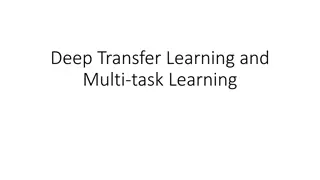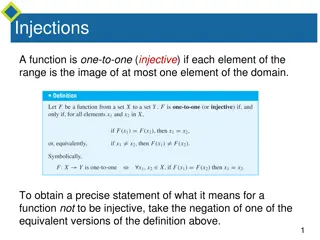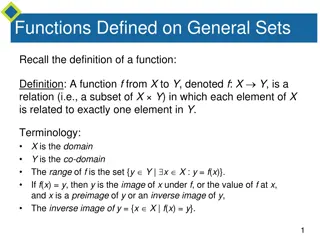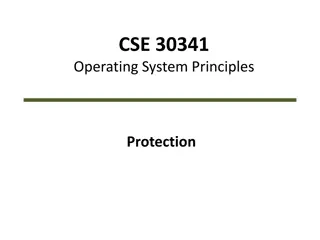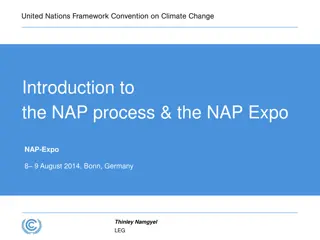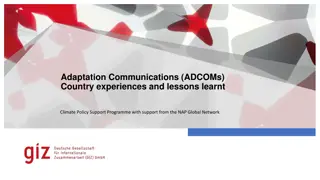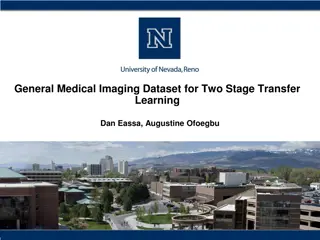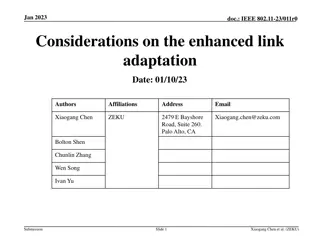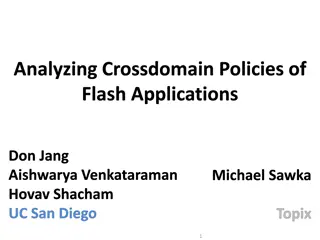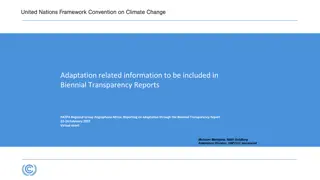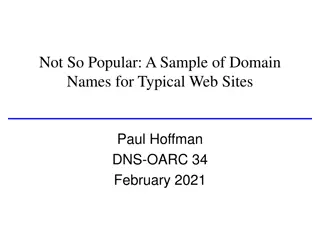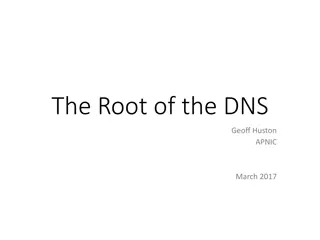Understanding Domain Adaptation in Machine Learning
Domain adaptation in machine learning involves transferring knowledge from one domain to another. It addresses the challenge of different data distributions in training and testing sets, leading to improved model performance. Techniques like domain adversarial training and transfer learning play a key role in adapting models to new domains and minimizing domain shift.
Download Presentation

Please find below an Image/Link to download the presentation.
The content on the website is provided AS IS for your information and personal use only. It may not be sold, licensed, or shared on other websites without obtaining consent from the author. Download presentation by click this link. If you encounter any issues during the download, it is possible that the publisher has removed the file from their server.
E N D
Presentation Transcript
Domain Adaptation Hung-yi Lee
You have learned a lot about ML. Training a classifier is not a big deal for you. Training Data Testing Data 57.5% 99.5% The results are from: http://proceedings.mlr.press/v37/ganin15.pdf Domain shift: Training and testing data have different distributions. Domain adaptation Transfer learning: https://youtu.be/qD6iD4TFsdQ
Domain Shift Training Data Testing Data Source Domain Target Domain 1 2 3 4 5 1 2 3 4 5 This is 0 . This is 1 .
Source Domain (with labeled data) Domain Adaptation 4 0 1 Knowledge of target domain Idea: training a model by source data, then fine-tune the model by target data Challenge: only limited target data, so be careful about overfitting 8 Little but labeled
Source Domain (with labeled data) Domain Adaptation 4 0 1 Knowledge of target domain 8 Little but labeled Large amount of unlabeled data
Basic Idea Learn to ignore colors Feature Extractor (network) feature Source The same distribution Different Target Feature Extractor (network) feature
Domain Adversarial Training image class distribution Feature Extractor Label Predictor 4 Source (labeled) blue points Target (unlabeled) red points
Domain Adversarial Training = min ?? ? ??? always zero? ?? ?? ?? Feature Extractor Label Predictor 4 ? = min ?? ? Generator ?? = min ?? ?? Feature extractor: Learn to fool domain classifier ?? ?? ?? Source? Target? Domain Classifier Also need to support label predictor Discriminator
Domain Adversarial Training Yaroslav Ganin, Victor Lempitsky, Unsupervised Domain Adaptation by Backpropagation, ICML, 2015 Hana Ajakan, Pascal Germain, Hugo Larochelle, Fran ois Laviolette, Mario Marchand, Domain-Adversarial Training of Neural Networks, JMLR, 2016
class 1 (source) class 2 (source) Target data (class unknown) Limitation Decision boundaries learned from source domain Source and target data are aligned, but Target data (unlabeled far from boundary)
Considering Decision Boundary Small entropy unlabeled Feature Extractor Label Predictor 1 2 3 4 5 unlabeled Large entropy Feature Extractor Label Predictor 1 2 3 4 5 Used in Decision-boundary Iterative Refinement Training with a Teacher (DIRT-T) https://arxiv.org/abs/1802.08735 Maximum Classifier Discrepancy https://arxiv.org/abs/1712.02560
Outlook Universal domain adaptation https://openaccess.thecvf.com /content_CVPR_2019/html/Yo u_Universal_Domain_Adaptati on_CVPR_2019_paper.html
Source Domain (with labeled data) Domain Adaptation 4 0 1 Knowledge of target domain Testing Time Training (TTT) 8 Little but labeled Large amount of unlabeled data little & unlabeled https://arxiv.org/ abs/1909.13231
Source Domain (with labeled data) Domain Adaptation 4 0 1 Knowledge of target domain 8 Little but labeled Large amount of unlabeled data little & unlabeled
Domain Generalization https://ieeexplore.ieee.org/document/8578664 cat dog dog cat cat dog cat dog Testing Training cat dog dog cat cat dog cat dog Testing https://arxiv.org/abs/2003.13216 Training
Source Domain (with labeled data) Concluding Remarks 4 0 1 Knowledge of target domain 8 Little but labeled Large amount of unlabeled data little & unlabeled


